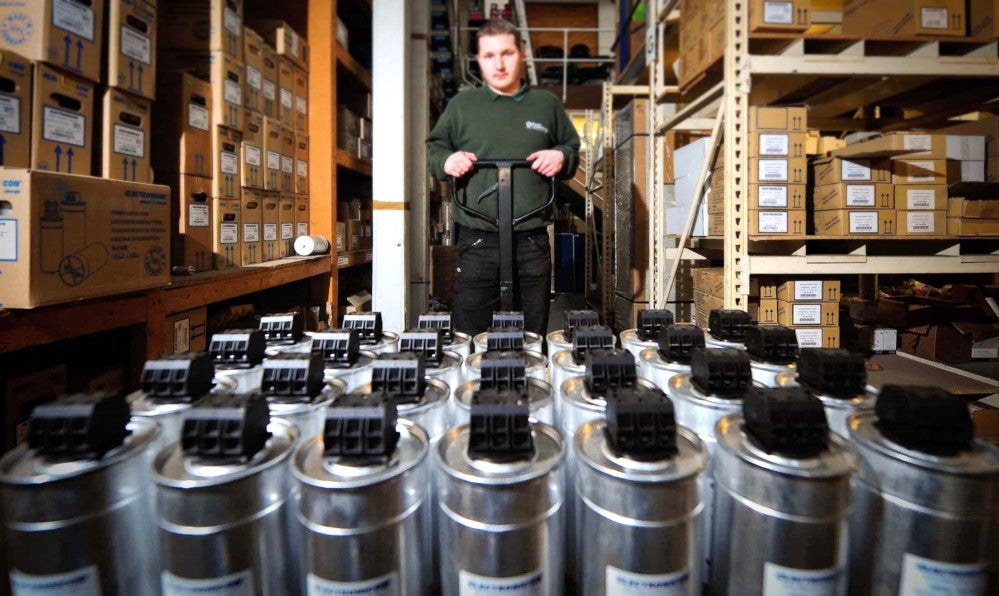While Ukraine’s monsters of political instability and
liquidity shortage still scare off the big players, the potential
for leasing growth in this growing nation is no myth … it’s
surely only a matter of time before onlookers invest, says
Fred Crawley
With a population of 46 million people, a large
agricultural and industrial base and a national capital expenditure
pool barely touched by asset finance, the case for development of
leasing in Ukraine is undeniable. Yet while the 20% drop in GDP and
the consequent near-shutdown of the leasing industry experienced in
2009 has largely been overcome, it seems there is a barrier
preventing asset finance from reaching its true potential in the
vast state. At the third Annual International Leasing Conference in
Kiev, lessors gathered to work out what’s keeping the Eastern giant
from standing to its full height.
It’s a hot day in the pine woods northwest of
Kiev, and a good proportion of the country’s leasing brass are
gathered at a quiet rural hotel to compare notes and make their
predictions for the year ahead.
The outlook, in short, is mixed. Yes, leasing
volumes have bounced back to levels not far shy of the young
market’s initial boom in 2007, and demand is strong, particularly
in the auto market. However, the national portfolio size of 34bn
UAH ($3.4bn) is unlikely to increase this year, and leasing’s
penetration into capital expenditure – already low at 4.4% compared
to a 15.5% European average – is forecast to shrink as economic
growth outpaces development of the leasing sector.
As the graphs are projected on screen and the
pros and cons of current market conditions are discussed, there is
a sense of underlying frustration; that the market would be capable
of great things if only both current and potential players could
secure the right investment to make the most of it.
International interest

US Tariffs are shifting - will you react or anticipate?
Don’t let policy changes catch you off guard. Stay proactive with real-time data and expert analysis.
By GlobalDataFor Ukraine, as with other Central and Eastern
European countries, the leasing market relies upon participation
from international banking groups – at present, international banks
make up 70% of the market, with this predicted to rise to 85% by
2013.
Some of this increase is coming from new
players, and there is a hope that more banks will enter the country
soon. Specifically, lessors are hoping for more Russian players,
spurred by the fact that five lessors from across the border have
opened their doors in Ukraine since the start of 2011.
Yet while it was hoped that Russian investment
might follow the pattern set by Hungarian bank OTP, which has risen
to third place in the ranking of Ukraine’s lessors by new business
volume in just three years of business, the Russian entrants appear
to be doing very little so far.
 According to Roman Ivanenko, former chairman of domestic
According to Roman Ivanenko, former chairman of domestic
lessor Euro Leasing and chairman of the Ukrainian Union of Lessors
(UUL), one should not expect the same big-ticket boom currently
shaking the Russian market to be replicated in Ukraine.
“In Russia you have tax depreciation on fixed
assets financed with financial leasing occurring three times faster
than in Ukraine, which is the main driver for that trend. Another
question is long-term financial resources. Russian financial groups
have them, but they are not available in Ukraine.”
Ivanenko explains that while Russian bank VTB
Leasing has executed a small number of big deals in the country’s
rail industry this year, they are largely the exceptions to the
rule – in fact, Ukraine’s average leasing deal size has decreased
71.9% from its peak in 2007, to a current value of 808,802 UAH.
So why the reluctance from foreign investors,
both present and potential, to drive growth in Ukraine?
The uncertainty that comes with low market
maturity is an issue – after all, there has only really been a
leasing industry of any significant size in the country since 2006,
and it took some time for the government to understand exactly how
it worked.
UUL director Marina Masich explains her
organisation’s typically pragmatic solution to the problem of
political understanding; a billboard set up opposite Kiev’s
parliament, displaying a ball of rolled-up neckties in the rough
outline of a monster (above), accompanied by a legend which
translates as: Leasing – it’s not a frightening beast, but a modern
financial instrument.
This simple and striking appeal had the desired
affect. On the first day of 2011, leasing commission was made
exempt from VAT while the tax regime for operational car leasing
payments was lightened, in what Ivanenko calls the most significant
change to Ukraine’s leasing market since the crisis.
Still, there is plenty of evidence to suggest
that the government could take a more proactive stance on leasing.
The world will be watching Ukraine in June as the Euro 2012
football tournament kicks off, and the week of the UUL’s conference
saw central Kiev swarming with workers hurrying to finish off
audiovisual rigs in time for the games.
However, unlike neighbouring tournament co-host
Poland, where preparations have caused a boom in leasing business
over the last two years, in Ukraine all infrastructure programmes
related to the tournament have been financed directly from state
budget, thus increasing state debt.
The inability of government to understand the
nuances of leasing is not just a Ukrainian problem, however. In the
UK market, for example, the Finance and Leasing Association has
only just convinced regulators to abandon plans to treat the
leasing market as if it worked with the same risk dynamics as the
credit industry.
Short-term funding
It seems the largest obstacle to growth is that
mentioned in Ivanenko’s explanation of differences between the
Ukrainian and Russian markets: the scarcity, high cost and
short-term nature of available funding.
In addition to the fact that Ukraine is still
recovering from a recessionary crash felt more severely than in
other European nations, a plethora of risk factors have stacked up
to impede the development of a more clement funding situation:
political instability, a long-running issue over gas prices, and
the clarity of state financial health being the chief among
them.
 Add to
Add to
that the anxiety over liquidity and capital requirements felt by
the entire European leasing sector over impending Basel III
regulation, and you have a recipe for a funding climate which is
unlikely to brighten much in the near future.
Notwithstanding these concerns, it would be
wrong to take away the impression that the expansion of asset
finance in Ukraine is at a standstill.
The development of the consumer car finance
market, in particular, may be the steady trickle that eventually
provokes a more substantial flow of investment into the country.
Aside from the Russian entrants mentioned above, there has been
another, much more active new participant in the market.
Porsche Leasing, having had a very minor
presence since before the 2009 crash, has made itself well-known
through a flurry of car finance business in the last two years, and
now holds the country’s eighth largest finance portfolio.
It is the first captive finance entity to have
entered the country on a significant scale, and Ivanenko feels that
it sets a precedent for more to follow. “I see a big space for
development over the next five years in this segment,” he says.
Jiri Matula, chief executive of UniCredit
Leasing’s business in the Ukraine and another speaker at UUL’s
conference, agrees.
Growth of the Eastern European auto market,
according to forecasts employed by UniCredit Leasing, is likely to
be double worldwide average growth, and achieve five times the rate
of the growth experienced in Western European nations. While Russia
is recognised by UniCredit as being the most obvious source of
Eastern market growth over the next three years, Ukraine is seen as
a clear number three after Poland, with solid gains to be made both
in new vehicle sales and the penetration of finance into the
market.
The obstacles, says Matula, are not to be
discounted, with “scarce, short and expensive” liquidity being
chief among them. The country’s information infrastructure could
also use some development, he adds, with costly contract execution,
patchy enforcement of creditors’ rights and a lack of credit
information services all forming barriers to more substantial car
finance growth.
But growth, he is adamant, will come through
“direct involvement of manufacturers”, either through the injection
of captive arms, or through local bank partnerships with networks
such as his own.
When asked what it will take to convince
manufacturers to take the plunge into Ukraine, he answers:
“Manufacturers will need to see more market scale to commit. Even
in making partnerships with banks here, dealer control and finance
models must be improved, but this is on the way. Volume and more
advanced dealer models will come first, and then I think we will
start to see major penetration increases.”
While consensus opinion seems safe in
predicting Ukraine will not be European leasing’s headline growth
story in 2012, it also seems the international community has
noticed the huge potential of this large and ambitious country. As
political and social stability, legislative infrastructure and
consumer appetites continue to recover from a particularly acute
recessionary experience, it surely can’t be too long before these
onlookers make the decision to invest.








